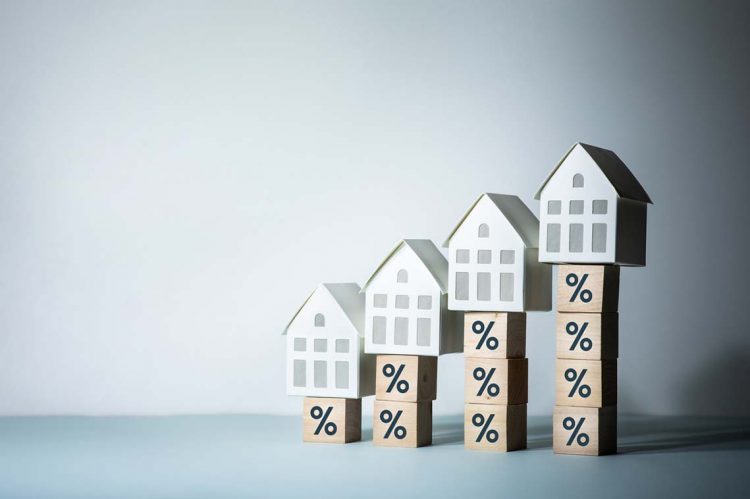According to the latest data from Freddie Mac released Thursday, April 14, mortgage rates have climbed to levels not seen in more than a decade.
The results of its Primary Mortgage Market Survey® (PMMS®) show that the 30-year fixed-rate mortgage (FRM) averaged 5% this week, up from 4.72% last week.
The last time that mortgage rates reached this level was in 2011.
Key findings:
- 30-year fixed-rate mortgage averaged 5.00% with an average 0.8 point as of April 14, 2022, up from last week when it averaged 4.72%. A year ago, at this time, the 30-year FRM averaged 3.04%.
- 15-year fixed-rate mortgage averaged 4.17% with an average 0.9 point, up from last week when it averaged 3.91%. A year ago at this time, the 15-year FRM averaged 2.35%.
- 5-year Treasury-indexed hybrid adjustable-rate mortgage (ARM) averaged 3.69% with an average 0.3 point, up from last week when it averaged 3.56%. A year ago, at this time, the 5-year ARM averaged 2.80%.
The takeaway:
“This week, mortgage rates averaged 5% for the first time in over a decade,” said Sam Khater, Freddie Mac’s chief economist. “As Americans contend with historically high inflation, the combination of rising mortgage rates, elevated home prices and tight inventory are making the pursuit of homeownership the most expensive in a generation.”
George Ratiu, manager of Economic Research at realtor.com® commented:
“The Freddie Mac fixed rate for a 30-year loan increased for the sixth consecutive week, with a 28-basis point leap to 5.0%, for the first time since May 2010. Markets reacted to the latest data on consumer prices, which accelerated in March to a pace not seen since 1981. The 10-year Treasury has been moving toward 2.8% this week as investors remain concerned about rising prices, even with the slight moderation in the Core Consumer Price Index hinting that we may have hit peak inflation. Hopes of a cooling may be premature, given the jump in producer prices, which advanced at the fastest pace on record. With consumers paying more at the pump, for groceries, clothes and travel, not to mention for necessities like health and childcare, businesses are growing increasingly concerned about a potential pullback in spending. With the price of gasoline driving price gains, the approaching summer travel season hangs in the balance as Americans take a hard look at what is left of their paychecks at the end of every month. Moreover, as companies make a push to coax workers back into offices, the prospect of crowded commutes, higher lunch costs, and higher gas prices make it a hard sell.
“Higher costs and declining real wages weigh heavily on people contemplating housing choices this spring. On one hand, rents are hitting new records in markets across the country, as landlords look to make up for lost income during the pandemic. Higher rents are encouraging many tenants to take a second look at buying a home, especially in cities where a mortgage payment may be on par or lower than monthly rent. On the other hand, the for-sale market continues to be undersupplied, making it difficult to find an affordable home. However, some relief might be on the way this spring, according to realtor.com®’s latest weekly data. The number of new listings rose for the second week in a row and there are signs of moderation in the pace of sales and price gains. The fresh supply of homes hints at a housing market taking its foot off the accelerator and beginning to coast toward a new normal. For now, many first-time buyers are still feeling the sting of sticker shock, with the mortgage payment for a median-priced home running $530 above a year ago, adding over $6,300 to the annual housing budget.”
 Jordan Grice is RISMedia’s associate online editor. Email him with your real estate news ideas at jgrice@rismedia.com.
Jordan Grice is RISMedia’s associate online editor. Email him with your real estate news ideas at jgrice@rismedia.com.












